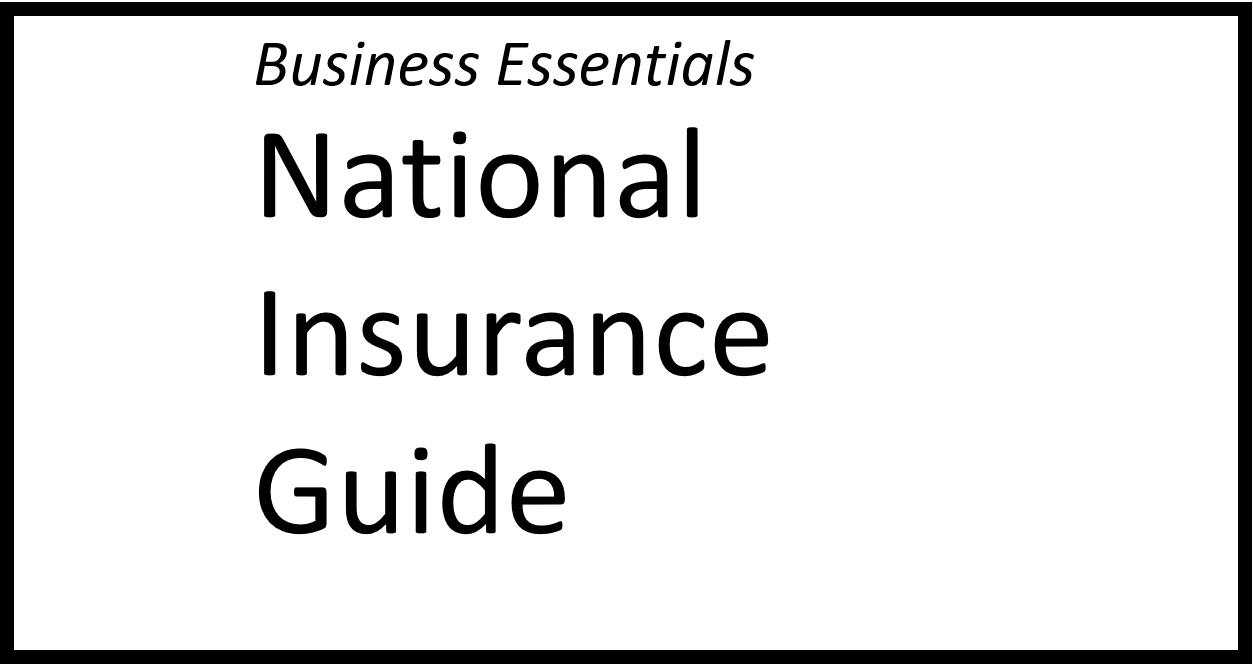
The Accounting Studio guide to
National Insurance
Individuals pay national insurance in order to qualify for a range of state benefits. These benefits include access to state pension, employment support and maternity pay. The level that national insurance kicks in is usually lower than that for income tax, so it is often one of the key determinants of working out what salary to take, vs dividends.
You only pay national insurance contributions (NIC) between the age of 16 and State Pension age. There are four different type of NICs.
There are lots of different bands, rates and limits but we will cover a few key items here.
Employment: Class 1
Employees National Insurance Contributions
You pay this on your earnings from a salary where you earn more than the Primary Threshold. Employers automatically deduct National Insurance as part of their payroll process.
Interestingly, there is a level, below the Primary threshold, called the lower earning limit, whereby you don’t actually pay any NICs, but you still get access to the state benefits as if you had paid national insurance. This limit is an important limit in determining the level of dividend vs salary that you should pay yourself, although it is not the full story.
Employers National Insurance Contributions
Employers, rather than employees pay this on staff salaries, typically at 13.8%. They pay it on earnings above the “Secondary Threshold”. This level used to be set at the same level as the primary threshold (see above), however since 2020 that has now changed and therefore impacts the thinking going into the dividend/salary calculation. The secondary threshold is now lower than the primary threshold and so while employees pay NICs later, employers end up paying it earlier.
Small businesses can avoid this additional cost by taking advantage of the “Employment Allowance“, reducing your employers national insurance bill by up to £4000. You can’t, unfortunately claim this if there is only one employee, and that employee is also a director.
Self-Employed: Class 2 NIC
There are two classes of National Insurance for the self-employed: Class 2 and Class 4.
Class 2 NICs are a fixed contribution set at £3.05 per week. You only pay it if you are self-employed and have profits of £6,475 or more. Although very small it is an important tax, as it is this that gives self-employed individuals access to state benefits. Class 4 national insurance does not give any access to state benefits.
Class 2 NICs are calculated and paid as part of the self-assessment process at the end of the tax year. The deadline is therefore the 31st January following the end of the tax year.
Self-Employed: Class 4 NIC
The self-employed pay Class 4 NICs on profits over £9,501 at 9% up to the higher rate tax threshold. Above this it is charged at 2%
As with Class 2 it is calculated and paid as part of the self-assessment process.
Voluntary: Class 3 NIC
For those individuals who don’t have enough contributions to get access to state benefits, class 3 NICs are a voluntary contribution to make up for missed contributions in the past.
There are lots of reasons for not having enough contributions such as
- A period working overseas
- A period of unemployment
- Having previously “opted out”
If you’re paying voluntary contributions for the previous 2 tax years, you’ll pay the original rates for those years. For all other years you’ll pay the current rate. Needless to say it can be a bit expensive, however it may well be worth it to access your state benefits such as the state pension.
To check your NIC record you can do this by accessing you personal tax account




